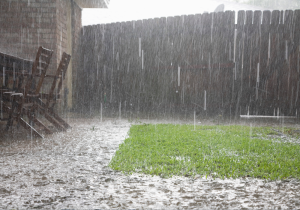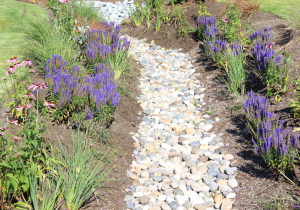Why Drainage Solutions Are Essential for Landscaping Projects

A lush, green yard is every homeowner’s dream. But achieving this often requires more than just planting flowers and mowing the lawn. One of the hidden secrets to a thriving landscape is effective drainage solutions. Without proper drainage, your beautiful garden could turn into a muddy mess, causing both aesthetic and structural issues. Proper drainage ensures that water flows away from your home and garden, preventing pooling and waterlogging. This not only enhances the health of your plants but also protects your property’s foundation from damage. In this blog post, we’ll explore why drainage solutions are essential for landscaping projects, common issues faced by homeowners, and how to tackle them efficiently.
Common Drainage Issues in Residential Landscapes
 Identifying Problem Areas
Identifying Problem Areas
Before you can solve drainage issues, you need to identify where water is pooling or causing problems. Common signs include standing water after rain, soggy patches in the lawn, and water stains on walls or fences. Pay close attention to areas near downspouts and low-lying regions of your yard.
Challenges of Poor Drainage
Poor drainage can lead to a host of problems. Waterlogged soil can suffocate plant roots, leading to poor growth or even plant death. Excess water can also erode soil, wash away mulch, and create breeding grounds for pests like mosquitoes. Additionally, water that seeps into your home’s foundation can cause cracks and structural damage over time.
Types of Drainage Solutions for Landscapes
Surface Drainage Techniques
Surface drainage solutions help redirect water away from problem areas on the surface of your yard. Some effective techniques include:
- Swales – Shallow ditches that guide water away from your garden.
- French Drains – Gravel-filled trenches with perforated pipes that direct water away from the property.
- Rain Gardens – Depressions filled with water-tolerant plants that absorb excess water.
Subsurface Drainage Systems
For more severe drainage issues, subsurface solutions might be necessary. These systems manage water below the soil surface, ensuring it doesn’t pool above ground. Options include:
- Perforated Pipes – Installed underground to collect and divert water.
- Dry Wells – Underground containers that temporarily store and slowly release water.
- Sump Pumps – Mechanical devices that pump water away from low-lying areas.
Best Practices for Implementing Drainage Solutions
 Planning and Designing with Drainage in Mind
Planning and Designing with Drainage in Mind
Effective drainage begins with proper planning. Assess your yard’s slope and natural water flow patterns before starting any landscaping project. Design your garden beds, pathways, and patios with gentle slopes to encourage water movement away from structures.
Material Selection and Installation Tips
Choosing the right materials is crucial for successful drainage solutions. For surface drains, use gravel and sand to promote water infiltration. For subsurface systems, opt for high-quality perforated pipes and geotextiles to prevent clogging. Proper installation is equally important—ensure trenches are deep enough and pipes are laid with a slight slope to facilitate water flow.
DIY vs. Professional Installation What’s Best for Your Project?
Deciding whether to tackle drainage installation yourself or hire a professional depends on the project’s complexity and your skill level. For simple surface drainage solutions, DIY might be feasible. However, subsurface systems often require specialized equipment and expertise. Consulting with a professional ensures your drainage solutions are correctly designed and installed, saving you time and potential headaches down the road.
Effective drainage is the unsung hero of successful landscaping. By identifying problem areas and implementing the right solutions, you can protect your plants, enhance your yard’s appearance, and safeguard your property. Whether you choose to DIY or hire a pro, prioritizing drainage ensures your landscaping efforts flourish for years to come.
